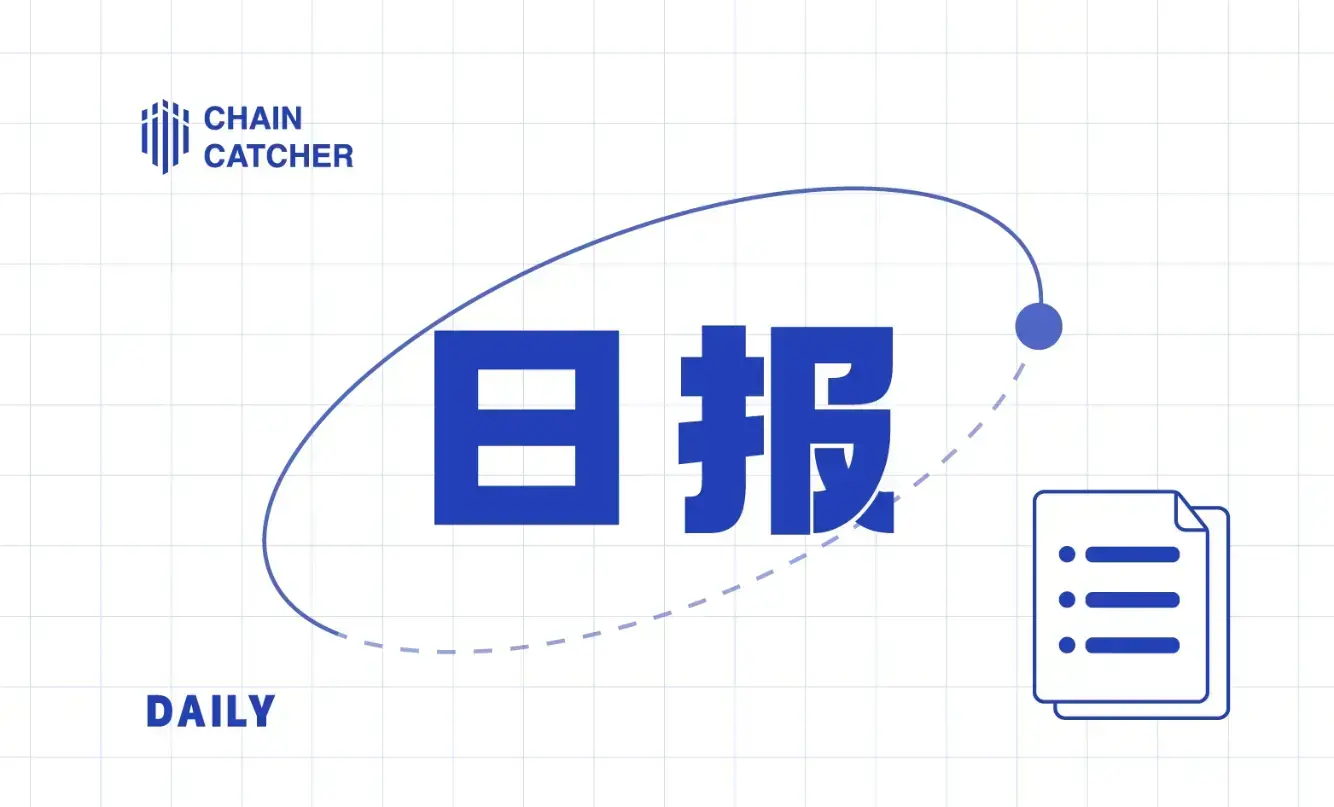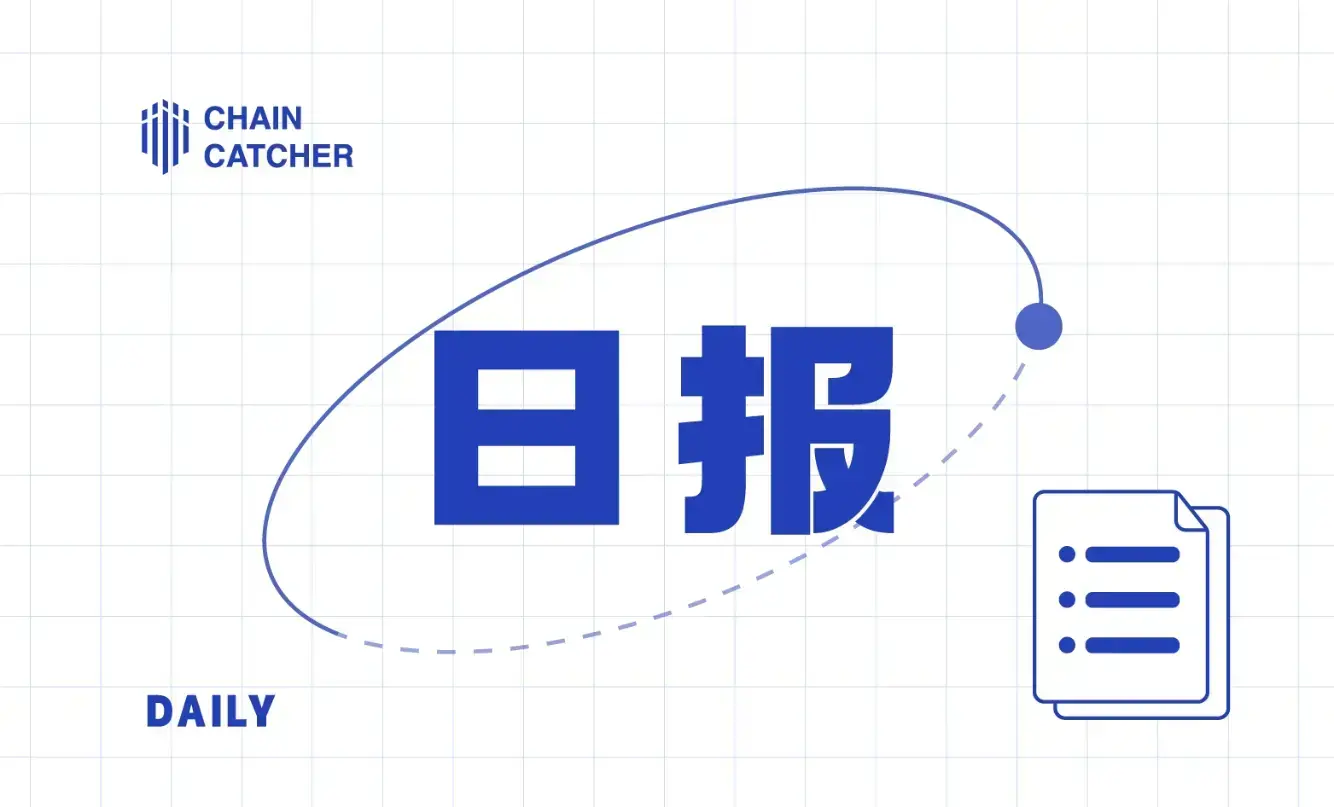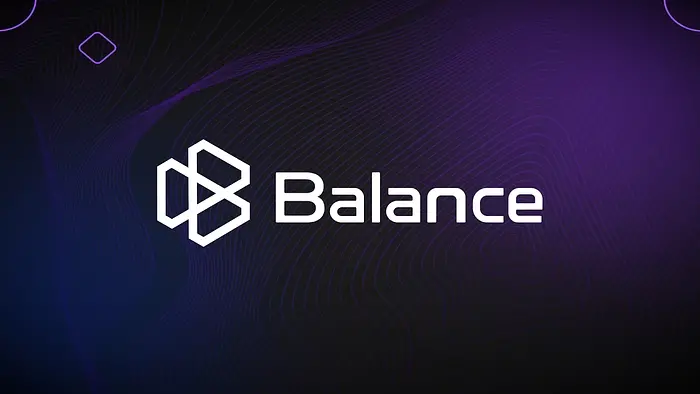The Evolution History of Cryptocurrency Exchanges Over 13 Years
Written by: longcrypto, The Path of the Metaverse
October 31 marks the 14th anniversary of the Bitcoin white paper's release. In just 3,192 words, it laid a solid foundation for the subsequent grand development of the cryptocurrency industry.
On the same day, 14 years later, Hong Kong released a policy declaration for the development of virtual assets, consisting of 3,800 words, showcasing Hong Kong's determination to fully embrace the metaverse, welcome Web3, and integrate into the cryptocurrency world.
The entire industry is excited: Ensure that Web3 happens in Hong Kong!
Hong Kong's embrace of the virtual asset sector and its preparation for a licensing system for new virtual asset service providers has greatly boosted the confidence of industry participants. Lennix, the Financial Market Director of OKX, stated that the virtual asset trading platform OKX is planning to apply for this license.
The policy support from Hong Kong undoubtedly brings unprecedented development opportunities for cryptocurrency exchanges. Meanwhile, within the industry, we see changes such as Huobi changing ownership, Binance's dominance, and OKX's global expansion. Under these various external and internal driving forces, one cannot help but ponder how the landscape of centralized exchanges (CEX) will evolve in the context of a new cycle.
At this current juncture, no one can predict an accurate answer. In fact, if we extend the timeline from the emergence of the first exchange in the cryptocurrency world, we have seen the rise of absolute powerhouses like Mt. Gox, the fleeting presence of disruptors like FCoin, the once-dominant "HBO" trio, and many smaller exchanges that have gradually been forgotten in the annals of history. Their founders once harbored dreams, intertwining personal struggles with the opportunities of the times, propelling the industry forward.
Starting Point
On October 31, 2008, the Bitcoin white paper was published. On January 3, 2009, the BTC genesis block was born.
According to Satoshi Nakamoto's design, the total supply of Bitcoin is 21 million coins, with an initial issuance of 0, and subsequent coins are mined entirely by "miners." The average block time is about 10 minutes, with an initial block reward of 50 BTC, halving every four years.
Although Bitcoin was designed as a peer-to-peer electronic cash system and has since been endowed with various functions such as "digital gold" and a tool against fiat currency inflation, it had no cash value for a considerable period after its inception.
It wasn't until October 5, 2009, that the first Bitcoin exchange was born. New Liberty Standard published the first Bitcoin/USD exchange rate, stating that 1.00 USD = 1,309.03 Bitcoin, making the price of each Bitcoin 0.00764 USD.

This price was not determined by the free market but was based on a seemingly "reasonable" cost pricing model:

This pricing principle assumed that the price of Bitcoin was equivalent to the electricity cost incurred in mining it.
Another significant contribution of New Liberty Standard to the cryptocurrency world was proposing the use of the Thai baht currency symbol as the official symbol for Bitcoin and using "BTC" as the currency code for Bitcoin.
On January 15, 2010, a user named "dwdollar" on the Bitcointalk.org forum began building his own Bitcoin exchange, providing a USD-based real-time exchange rate for Bitcoin, allowing people to buy and sell Bitcoin from each other.
 (Image Source: bitcointalk)
(Image Source: bitcointalk)
After testing, on March 16, 2010, the bitcoinmarket exchange officially went live, which many later authors mistakenly believed to be the world's first Bitcoin exchange. However, bitcoinmarket had very few users, with only 9 registered on the first day and 3 making deposits, including dwdollar himself. dwdollar also purchased 500 Bitcoins at a price of 0.0067 USD each.
At that time, transactions were conducted using PayPal, leading to many fraudulent incidents, and bitcoinmarket was forced to stop PayPal transactions on June 4, 2011.
Dominance
After the earlier explorations, exchanges began to spring up globally like mushrooms in 2011. Notable establishments included GLBSE, which had gone public, Slovenia's second-largest exchange Bitstamp, the Russian-founded BTC-e, Brazil's first Bitcoin exchange Bitcoin Brasil, Poland's first Bitcoin exchange Bitomat, and China's first Bitcoin exchange BTC China.
In 2013, China saw the first wave of Bitcoin exchange frenzy. Exchanges like BtcTrade, CHBTC, Yunbi, Huobi, OKCoin, Bit Era, Bter, Jubi, Yuanbao, 796 Exchange, and FXBTC were established. BTC China, which had been established earlier, also welcomed its benefactor Li Qiyuan, who secured 5 million USD in funding from investors just four months after joining the company.
With numerous players in the field, the most dominant exchange in Bitcoin history took the stage.
In July 2010, Mt. Gox, founded by Jed McCaleb, the father of eDonkey, was established and quickly became the largest Bitcoin exchange by trading volume within a month. In March 2011, Mt. Gox was sold to Japan's Tibanne co, managed by Mark Karpeles (nicknamed "Fatty"). At its peak, Mt. Gox accounted for 80% of the global Bitcoin trading volume.
On February 28, 2014, Mt. Gox filed for bankruptcy, having lost 850,000 BTC, including 750,000 BTC belonging to customers and 100,000 BTC owned by Mt. Gox itself.

In the years following Mt. Gox's collapse, a stable dominant position was left vacant.
During this time, three giants emerged abroad, represented by Bitfinex, Bitstamp, and Btc-e, while BTC China, OKCoin, and Huobi formed a three-way stalemate, with the latter two alternating in taking the lead.
In May 2018, FCoin emerged, and within just half a month of its launch, its trading volume not only topped the charts but also exceeded the combined total of the second and seventh places.
Of course, all of this was predicated on the massive influx of users and arbitrage bots brought about by "transaction mining."
On February 17, 2020, FCoin founder Zhang Jian released an announcement titled "The Truth About FCoin," stating that FCoin's reserves were insufficient to meet user withdrawals, with the expected shortfall estimated to be between 7,000 and 13,000 BTC. The last sentence of the announcement read: "In my lifetime, I will take full responsibility."
Currently, Binance is the largest exchange. According to statistics released by The Block's research VP Larry Cermak on October 24, Binance's total spot and derivatives trading volume exceeded that of all other exchanges combined in the past 24 hours, with spot accounting for 55.1% and derivatives for 54.4% of the total trading volume.

*(Image Source: * Larry Cermak)
Regulation
As an unregulated currency, Bitcoin's potential financial risks have gradually attracted the attention of regulators as its scale has grown. Centralized exchanges, as the primary venues for concentrated bidding, are naturally at the forefront.
On December 5, 2013, the central bank and five ministries issued a notice titled "Notice on Preventing Bitcoin Risks," which was officially referred to as the "Five National Regulations" by early insiders, stating that Bitcoin should not exist as a currency and prohibiting financial institutions from providing Bitcoin trading services. On December 16, the central bank summoned third-party payment companies like Alipay and Tenpay, demanding they not provide payment and clearing services for Bitcoin, Litecoin, and other trading websites. Following this crackdown, Bitcoin's price plummeted by 60%.
This regulation forced some second- and third-tier exchanges out of the historical stage. After third-party payment channels were completely blocked, Huobi quickly opened manual payment options, subsequently becoming the largest Bitcoin trading platform in China by trading volume.
Following China's lead, in February 2014, the Russian Prosecutor General's Office issued a statement declaring that Bitcoin could not be used within Russia.
On September 4, 2017, China's central bank and seven ministries jointly released the "Notice on Preventing Risks of Token Issuance and Financing" (commonly referred to as the "94 Document"), cracking down on ICO activities that disrupted the normal economic and financial order.
In February 2021, virtual currencies were included in the "Regulations on Preventing and Dealing with Illegal Fundraising." On the evening of May 18 of the same year, the China Internet Finance Association, the China Banking Association, and the China Payment and Clearing Association jointly issued a notice on preventing risks from virtual currency trading speculation. On May 21, the Financial Stability Development Committee of the State Council explicitly proposed to crack down on Bitcoin mining and trading activities.
In March 2022, the People's Bank of China announced that the speculation surrounding virtual currency trading had been effectively curbed, with China's share of global Bitcoin trading volume rapidly dropping from over 90% to 10%.
During this period, exchanges underwent a major reshuffle. BTC China exited the trading market, while Huobi actively expanded into overseas markets. OKEx and Binance also established themselves overseas that year and rapidly grew.
Although the United States has not issued specific regulatory documents targeting Bitcoin, many executives from exchanges have been arrested for money laundering offenses.
In February 2014, the CEO of BitInstant.com, Shrem, was arrested by U.S. police on suspicion of money laundering.
In July 2017, BTC-e's main figure, Winnik, was arrested by Greek authorities at the request of the U.S., which accused Winnik of creating the cryptocurrency trading platform BTC-e and laundering billions of dollars through it.
In October 2020, the founders and three executives of BitMEX were charged with criminal and civil offenses by the U.S. Department of Justice and the Commodity Futures Trading Commission (CFTC), accused of conspiring to violate the U.S. Bank Secrecy Act, operating an unregistered trading platform, and violating KYC and anti-money laundering regulations.
War
2014 was the year of Bitcoin futures, and the "Five National Regulations" had a huge impact on Bitcoin prices, ushering in a prolonged bear market lasting two years.
During the one-sided decline of the bear market, spot trading volume significantly shrank, while Bitcoin futures trading began to heat up.
The 796 Exchange, established in June 2013, became an early player in Bitcoin futures trading, at one point becoming the largest trading platform by volume during the bear market of 2014.
In September 2014, Huobi launched BitVC to enter the futures trading market. Shortly after, OKCoin launched Bitcoin virtual futures trading on September 15.
The futures war officially began. The three exchanges also engaged in a price war over transaction fees, with 796's contract fees dropping from an early 0.3% to 0.03%, OKCoin's futures opening fee set at 0.03%, and closing fee at 0. Huobi's BitVC futures trading fee was 0.025%, and it later launched a V-point privilege feature to further reduce fees.
In this futures war, OKCoin emerged as the ultimate winner, while 796 faced access issues on November 3, gradually losing customer trust. Huobi seized the opportunity to catch up but did not hold on until the end.
In 2018, the cryptocurrency market fell into another bear market, reigniting the contract war.
At this time, the dominant player to challenge was BitMEX, established in 2014, which offered leverage up to 100 times, with founder HAYES dubbed the "King of Leverage." BitMEX's daily trading volume exceeded 16 billion USD at its peak.
In March 2018, ByBit, focused on derivatives trading, was established, known for its marketing prowess. The founder even personally participated in trading during product launches, leaving the audience in awe.
On December 10, 2018, Huobi's contracts officially launched.
On December 11, 2018, OKEx announced it would launch perpetual contract trading.
In 2019, FTX, focusing on derivatives trading, was established.
After the "312" flash crash in 2020, BitMEX gradually exited the historical stage, while Binance, OKEx, and Huobi all surpassed BitMEX in the derivatives sector.
In 2018, there was also a brief war against FCoin.
At that time, FCoin leveraged transaction mining to surpass all previously established exchanges in trading volume.
Volume manipulation not only disrupted industry rules but also risked siphoning off users from other exchanges. Soon, FCoin faced a joint crackdown from leading platforms, with OKEx launching a digital asset exchange open win-win plan, Binance initiating a digital asset exchange alliance plan, and Huobi upgrading HT to a global ecological token. Exchanges began to cultivate their own power, and cloud exchanges started to emerge widely, allowing operators to share the trading depth and liquidity of leading exchanges without any technical development. During this period, specialized cloud trading system service providers like CoinCore Cloud, ChainUP, and Hongsheng Technology emerged, leading to a surge of thousands of exchanges in the market.
This war ended with the collapse of FCoin. Subsequently, the three major players, OKEx, Huobi, and Binance, formed a stable "HBO" structure.
In 2020, with the Federal Reserve's monetary easing, DeFi Summer arrived.
DEXs like Uniswap, Sushiswap, Curve, and DYDX rose rapidly, capturing long-tail markets that centralized exchanges struggled to reach and potentially seizing long-term pricing power from CEXs.
A major battle is inevitable.
Centralized exchanges rushed to list various popular DeFi tokens for free while also building or supporting their own exchange public chains. In September 2020, Binance launched BSC. On September 13, OKChain was officially renamed OKExChain, with its mainnet launching in January 2021. In December, Huobi launched the Huobi ECO Chain.
Among them, BSC was the most successful, HECO was the most controversial, and OKC launched later, missing the golden window for development.
As exchanges launched DeFi public chains, DEXs and CEXs transitioned from opposition to mutual embrace, but the neutrality of exchange public chains came under scrutiny. Especially following the October 7 incident where 2 million BNB were stolen from the BSC chain and the stark contrast in Binance's handling of multiple DeFi project thefts in May 2021, many mocked Binance for tearing off the so-called decentralized facade of BSC.
Dreams
"After all, I am also an idealistic and passionate youth, I Have a dream."
This was said by Huobi founder Li Lin. In February 2014, Huobi's daily trading volume reached 380,000 BTC, with a trading amount exceeding 3.8 billion USD, capturing over 50% of the global Bitcoin trading market, becoming the largest Bitcoin trading platform in the world.
Li Lin once said he was a person who took things seriously, always striving to achieve excellence in everything. As a serial entrepreneur, he had founded the social platform "Friendship Network" and the group buying comparison site "Renrenzhe," but only Huobi was his proudest entrepreneurial project.
"I am willing to be the indestructible little cockroach, and I will not give up because of difficulties."
In December 2013, with the "Five National Regulations," Li Lin did not give up, and Huobi leaped to become a leading exchange.
During the "94" storm in 2017, Li Lin did not give up, and Huobi began its globalization efforts, securing financial licenses in the U.S., South Korea, Japan, Gibraltar, Hong Kong, and other regions.
In 2019, facing criticism from Huobi supporters, Li Lin personally responded on his public account, showing his immense passion for the industry.
On October 8, 2022, Huobi's main entity was acquired, and Li Lin was no longer a shareholder of HuobiGlobal, nor did he have any direct or indirect authority over HuobiGlobal.
After ten years of hardship, the passion remains. One wonders if, at the moment of making this decision, Li Lin recalled the entrepreneurial youth who once harbored dreams.
Voyage
2017 was a watershed year for the industry, marking the beginning of the globalization strategy for Chinese exchanges, with Binance, Huobi, and OKEx all venturing into global markets that year.
In 2022, the market entered another winter, and exchanges faced new transformations.
On January 18, OKEx announced its brand upgrade to OKX.
A single letter change reflects the new dynamics of the exchange, shifting from pure token trading to exploring fields like the metaverse, GameFi, and Web3. Subsequently, OKX launched a Web3 wallet that integrates four major components: digital currency wallet, DEX, NFT marketplace, and DApp exploration, allowing users to view and manage their on-chain assets without manual configuration.
Looking back at the development of exchanges, we can clearly see the evolution from initially providing only BTC trading to later offering equity crowdfunding, leveraged lending, settlement contracts, perpetual contracts, leveraged tokens, options, and increasingly complex derivatives trading, culminating in the current NFT trading. Exchanges continuously expand the boundaries of financial assets, reconstructing a new financial order.
At the same time, exchanges in the industry are pushing the cryptocurrency world into broader realms from different directions.
For example, the first licensed exchange in the U.S., Coinbase, adheres to a compliance route, wielding significant influence in the U.S. and globally, with talents emerging from the "Coinbase mafia" branching out into various fields within the crypto space.
In April 2021, Coinbase went public on the NASDAQ, with its market value reaching as high as 100 billion USD post-listing. This became an important milestone in the development of cryptocurrency exchanges.
Binance, on the other hand, is making moves on multiple fronts. CZ is meeting with political leaders in various countries to gain more recognition for cryptocurrencies. At the same time, Binance Labs was established to seek out promising crypto projects globally. Currently, Binance Labs manages a total of 7.5 billion USD in assets and has invested in over 200 projects, making it the largest crypto asset venture capital institution in the industry.
However, as the largest exchange by trading volume, Binance's actions have inevitably drawn criticism. For instance, the BSC theft incident and last month's forced conversion of USDC, USDP, and TUSD stablecoin balances and new deposits into BUSD have been criticized as crypto hegemony.
FTX, born in the cracks, has taken the Wall Street elite route. The founder SBF's identity as an "altruist" is widely known in the crypto space; he also supported the 2020 U.S. presidential election, donating 5.2 million USD to Biden in an attempt to bring more favorable policy support to the crypto industry.
After the change of ownership, Huobi, under the leadership of Sun Yuchen, took an unconventional path, ensuring that "Sun is late but will arrive" never wastes any opportunity for hot marketing. On October 17, KOL "Liangxi" switched to Twitter, and the first space live broadcast attracted the highest number of viewers on Twitter's real-time Space ranking. Sun Yuchen pledged 50,000 USD to support Liangxi's "dream in the bear market," with Liangxi, who had previously lashed out at exchanges after a liquidation, now addressing Sun as "Brother Sun."
On October 24, Liangxi and Sun Yuchen made their debut on Huobi Live, bringing in over 3,000 registrations for Huobi during the live broadcast, with Sun Yuchen praising the outcome.
As a top influencer in the crypto space, the 19-year-old Liangxi captivates the audience with his genuine personality, and his spontaneous outbursts are hard for many to resist. While Huobi can leverage him to capture traffic, the impact on reputation also needs consideration.
In contrast to Huobi's use of controversial KOLs for marketing, FTX and OKX have expanded public awareness of the crypto industry by sponsoring influential sporting events.
In 2021, FTX secured naming rights for the Miami Heat arena for 135 million USD and acquired naming rights for the California Golden Bears' home venue, California Memorial Stadium. OKX became the chief sponsor of the McLaren team in May this year and spent 20 million USD to sponsor Manchester City in July.
Sponsoring popular sports events or clubs is not unusual in real life, but for the still relatively niche and cutting-edge crypto industry, it could achieve "breaking the circle" marketing. Especially since crypto is inherently global in nature, combining it with globally popular sports events makes perfect sense, significantly enhancing the brand image and recognition of exchanges in different countries and regions. On the other hand, fans of these sports events are generally younger and more open to new things, presenting a significant potential for conversion into new users in the crypto industry.
Today, the crypto industry is undergoing a new round of winter, with exchanges like Crypto.com, Bybit, and Coinbase laying off staff to varying degrees, while OKX and Binance are expanding their recruitment against the trend, reflecting the significant role that leading exchanges play as ballast in the industry's development. Additionally, OKX and LinkedIn released the 2022 Global Web3 Talent Report, providing clear guidance for outstanding talents to join Web3.
In the 13 years since the first crypto exchange appeared, crypto trading has undergone several transformations. The period from 2009 to 2011 was the nascent stage of crypto exchanges, where Bitcoin's value was only recognized by a small group of enthusiasts. From 2011 to 2014, as Bitcoin gained wider recognition, exchanges experienced their first explosive growth, with Mt. Gox becoming the dominant player. From 2014 to 2016, Mt. Gox went bankrupt due to hacking, leading to a three-way stalemate in the market, with platforms like OKCoin, Huobi, and BTC China accounting for 80% of global trading volume at one point. Since 2017, Binance has emerged as the industry leader, while OKX has focused on internationalization, and the older exchange Huobi has shown signs of aging, at one point being surpassed by newer players like Kucoin and FTX.
It is evident that as the pinnacle of the industry pyramid, crypto exchanges are constantly engaged in fierce competition.
Behind the ever-changing landscape, one thing remains constant: security and trust. If there had been no coin loss incidents, would Mt. Gox still have collapsed? If there had been no liquidity crisis caused by a series of institutional failures, would platforms like AEX and Huobi have faced difficulties? Because of trust, crypto enthusiasts around the world voluntarily became Binance angels, viewed by CZ as the secret to Binance's success. Due to its emphasis on security, during the unprecedented Luna collapse incident, OKX's risk control system activated an automatic redemption mechanism, allowing users who participated in UST investments on OKX to avoid disaster.
Currently, the industry's narrative is shifting from Crypto to Web3, and as the foundation of Web3, Crypto will undoubtedly remain unshakable. To this day, there are still 1.7 billion people worldwide without bank accounts, and cryptocurrencies, as permissionless money, can provide rich financial services for these individuals. As platforms for value exchange, crypto exchanges are bound to usher in a new wave of development, and the landscape of exchanges will further change.











